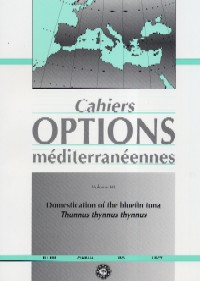| Article précédent | p. 361-364 | Article suivant |
Assessment of carrying capacity of Cistus spp. shrublands for red deer (Cervus elaphus L.) management in Monfragüe Natural Park (SW Spain)
Three types of Cistus ssp. maquis were classified using the TWINSPAN program. In the first type (L) the dominant species is Cistus ladanifer, in the second type (S), Cistus salvifolius and in the third (T), the transition between the other two. The utilization of the different cistes rangelands has been calculated using the resource use rate ( per cent of bites) and the number of faeces per transept. Cistes cover and density, nutritional value and stocking rate (CC) have been estimated for every plant community. In type L, CC amounted to 0.03 plus-less than 0.025, in S, it was 0.070 plus-less than 0.074, and in type T it was 0.017 plus-less than 0.011 deer per ha. Although Cistus maquis account for 60 per cent of the plant community in the region of Extremadura, CC is very poor since this species is not well accepted by deer, probably because of its high toxin content.
- [ Afficher ]
- [ Télécharger ]
- [ Exporter la citation ]
Vous pouvez télécharger la citation au format :
- [ Imprimer ]
-
Mots-clés
CAPACITE DE CHARGE, CERVUS ELAPHUS, CISTUS, ESPAGNECiter cet article
Paton D., Núñez J., Fanlo R., Alarcos S., Latorre E., Díaz M.A. Assessment of carrying capacity of Cistus spp. shrublands for red deer (Cervus elaphus L.) management in Monfragüe Natural Park (SW Spain). In : Ferchichi A. (comp.), Ferchichi A. (collab.). Réhabilitation des pâturages et des parcours en milieux méditerranéens . Zaragoza : CIHEAM, 2004. p. 361-364. (Cahiers Options Méditerranéennes; n. 62). 11. Réunion du Sous-Réseau Ressources Fourragères Méditerranéennes du Réseau Coopératif Interrégional FAO-CIHEAM de Recherche et Développement sur les Pâturages et les Cultures Fourragères, 2002/10/29-2002/11/01, Djerba (Tunisia). http://om.ciheam.org/om/pdf/c62/04600188.pdf



